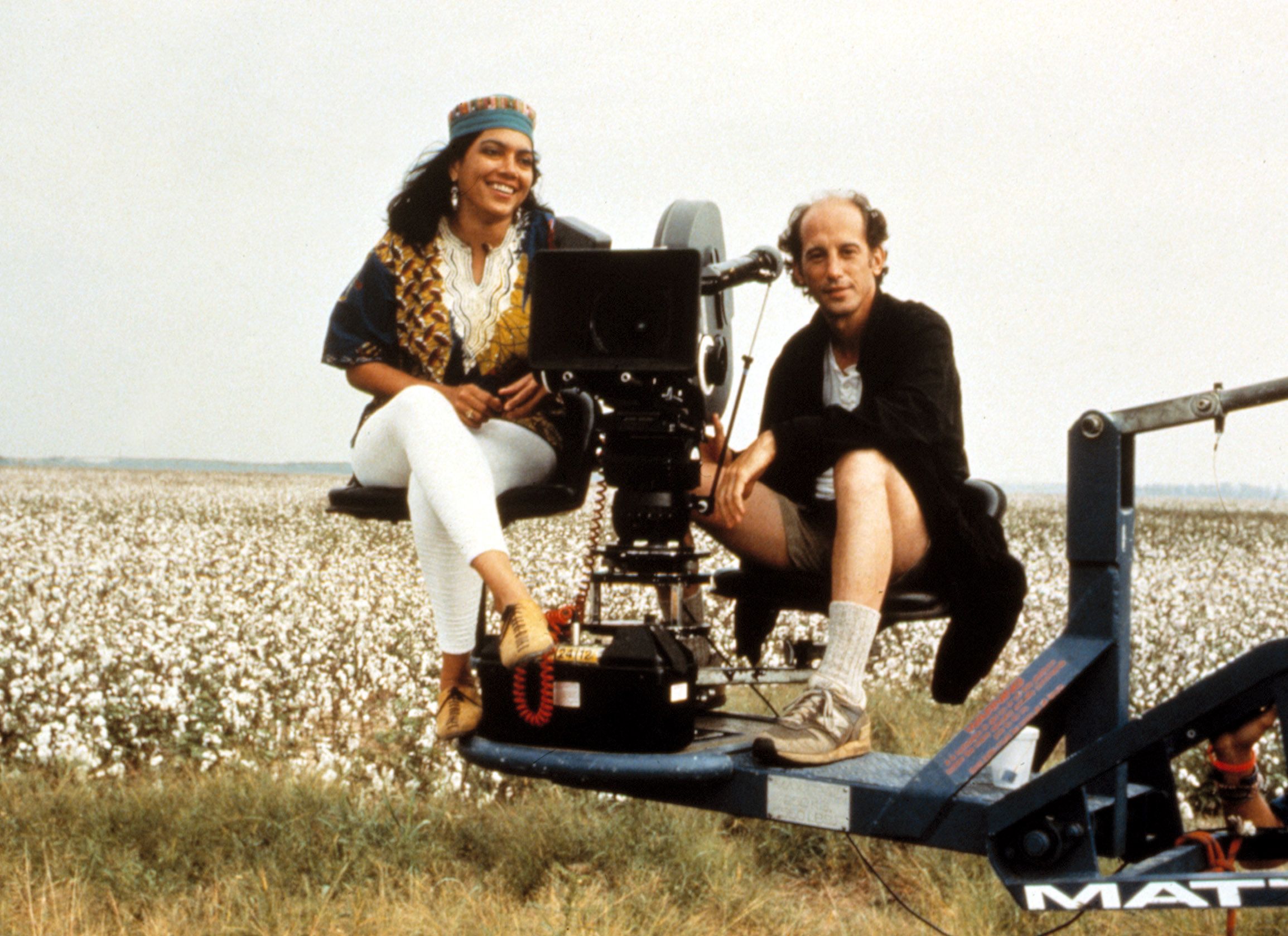
Directors Mira Nair and Bijoy Shetty on Changing How the World Sees India
What does it mean to show India to the world—not as a postcard cliché, but in all its layers and contradictions?
Mira Nair has kept at it for over three decades—whether through Monsoon Wedding (2001), which took Delhi’s chaotic beauty global, or The Namesake (2006), which tenderly captured the sharp pangs of diasporic longing. And today, Bijoy Shetty is attempting something similar in a different medium. The 27-year-old director’s music videos for artists like Hanumankind, Martin Garrix, and Badshah push Indian hip-hop beyond borrowed aesthetics, rooting it in local culture—dahi handi pyramids, daredevil riders, traditional martial arts—while speaking in a visual language that has universal appeal.
When Nair and Shetty meet over Zoom for a conversation with Vogue, they exchange notes about each other’s work and discuss the tug-of-war between authenticity and representation. Most of all, they talk about resisting the pressure to flatten identities into marketable tropes. For both filmmakers, the challenge and the joy are the same: to show India as it is—in all its messy, irresistible complexity.
Vogue: Mira, you’ve often said that you’re an Indian filmmaker at home in the world. Your films have helped change how the world sees India and its diaspora. Bijoy, your music videos, particularly your recent work with Hanumankind, are strongly rooted in Indian culture. How important is the idea of representation in your work?
Mira Nair: I am not into being an ambassador and saying my country is so wonderful, so rich. I don’t approach filmmaking like a Benetton ad. The point is to plunge into the layers of life in front of you and extricate the humanity that is local to that place, and to do it in a way that is so truthful that it becomes universal. The point is that we’re not islands among ourselves; we are actually all utterly human. That said, as an Indian filmmaker living in New York, then in East Africa, I was always in these places where I was a novelty, where I may have been forced to explain myself. But I grew up with a kind of fierceness—I’m not going to justify myself or give you lessons on my bindi. I refuse to let people who haven’t lived in our streets take our culture and bugger it up.
Bijoy Shetty: Sadly, colonization is in our DNA, where we assume that Western culture is the superior one. But in all honesty, I’ve benefited from that perception. With “Big Dawgs,” a lot of the reaction was because they never thought that an Indian could rap like this. It’s not like this tremendous video with high production value. It’s just the shock of it being an Indian rapper and an Indian music video that has taken it wherever it’s gone. But once that novelty wears off, does your work have a strong enough identity to keep the viewer’s attention? That’s what really matters.
Mira, you’ve spoken about how your primary influence is the street, whether it’s where your stories come from or your tendency to cast non-actors in your films. Bijoy, hip-hop was born on the streets of the Bronx. Can you talk about what the street means to you as a character, and how you look to it for inspiration?
MN: My earliest inspirations came from the street—from growing up in Bhubaneswar, cycling past temples or watching beetles emerge after the monsoon, to stumbling upon Odissi rehearsals in the open. Those sights and sounds gave me a sense of the extraordinary in the everyday. While shooting India Cabaret (1985), I lived with cabaret dancers for months and was often mistaken for one. That immersion taught me how rich and complicated ordinary life could be. I would see, feel, and hear things that, if you put them in fiction, people would say it’s implausible or even impossible. The street was my “infinite school”—the school of life and of having the humility to enter that life without preconceived notions.
BS: Most of what I create comes directly from lived experiences. Growing up in Maharashtra, I was surrounded by dahi handi celebrations and I would constantly see people fall and hit the ground at terrifying speeds. I wanted to document that, which is where the idea for the music video for “Weightless” by Martin Garrix and Arijit Singh came from. It was the same with “Big Dawgs”; as a child, my family would take me to the circus, and when I heard the song, there was a sample that sounded just like a bike revving. That led me to think of the well of death. For me, inspiration always comes from experience, research, and the instinct to turn what I’ve lived into something cinematic.
How do you recover from creative setbacks when a shoot falls flat or a film doesn’t land the way you’d imagined it?
MN: I work in my garden because the trees don’t ask questions. The rhythm of nature is an extraordinary teacher; there is a time to be fallow and there is a time to be ripe. Something that was extraordinarily beautiful last week is dead today. So you surrender to that genuine humility of time. Yoga also helps me a lot, and of course, my family. But nothing fully takes away the terrible loneliness when you start with an idea and end up with something else.
BS: It really haunts me, man. But at the same time, it has become a sort of superpower. Every time I mess up, the anxiety to get it right the next time helps me a lot. I know I won’t make the same mistake again because of that fear. Once I’ve learned the lesson, I try to compartmentalize and forget about it.
What’s a piece of advice that you wish someone had given you when you were starting out?
MN: Don’t take no for an answer. You have to have the heart of a poet and the skin of an elephant. It’s very tough, because you have to develop a thick skin while retaining the sensitivity you need to be a good filmmaker.
BS: There are no rules. You can shoot anything you want. Don’t be constrained by what people have taught you or told you. Just be okay with being a little uncomfortable and figuring it out as you go.
Mira, your films have always deeply engaged with questions of identity and belonging. Your son, Zohran Mamdani, is now doing something similar through politics, running for mayor of New York City. Do you see his work as a continuation of that impulse, just in another medium?
Zohran Mamdani celebrates his victory in New York City’s mayoral election with Nair.
Photo: Getty Images
MN: I feel like Zohran brings us to a new dawn and a new day. I’m amazed by his bravery and articulation, but what I really respond to is that he embodies the multiplicity of the worlds in him without apology, and actually with great celebration. I love that he gives us all hope. There’s a visionary aspect to how he sees the world. And it’s not about power. It’s about equality, justice, and real respect for working people.
BS: You must be so proud, ma’am.
MN: I am, I am. My mother was quoted at the 1988 Cannes Film Festival, where Salaam Bombay! was being screened, saying, “I’m the producer of the director.” And now I say, “I’m the producer of the candidate.”
This story appears in Vogue India’s November-December 2025 issue, now on stands. Subscribe here.










